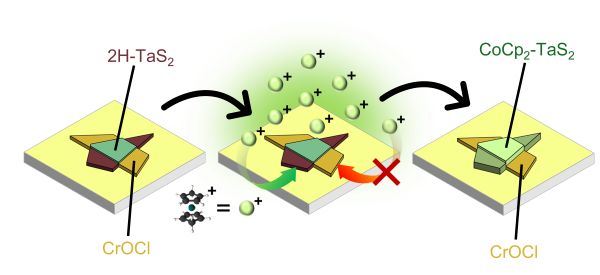Galvanic intercalation of molecular cations into Van der Waals materials and heterostructures
DOI: 10.1038/s44160-025-00935-z
Daniel Tezze, Covadonga Álvarez-García, Daniel Margineda, Mohammad Furqan, Samuele Mattioni, José Manuel Pereira, Umer Ahsan, Vlastimil Mazanek, Yogesh Kumar Maurya, Ilaria Abdel Aziz, Daniele Mantione, Aurelio Mateo-Alonso, Frederik Schiller, Fèlix Casanova, Samuel Mañas-Valero, Ángel Alegría, Eugenio Coronado, Iván Rivilla, Zdenek Sofer, Beatriz Martín-García, Maider Ormaza, Raúl Arenal, Luis E. Hueso & Marco Gobbi
Nature Synthesis (2025)
Published: 18th Nov. 2025
Abstract:
The intercalation of molecular species into van der Waals (vdW) crystals is a powerful approach to combine the physical properties of vdW materials with the chemical versatility of molecules. However, its transformative promise remains underexplored, partly due to the difficulty of preserving high crystalline quality down to the few-layer limit using conventional intercalation methods. Here we present a galvanic strategy that exploits the low reduction potentials of selected metals to intercalate diverse molecular cations, including organometallic and chiral species, into both bulk vdW crystals and few-layer flakes under mild conditions, yielding 50 organic–inorganic superlattices. In addition, our method enables vertical intercalation heterostructures, where molecular cations are confined to a single component in a vdW stack, and lateral heterostructures, where two distinct molecular species are introduced into adjacent regions of the same flake. Finally, we demonstrate device-level integration of superconducting heterostructures, highlighting the prospects of galvanic intercalation for hybrid devices and emergent quantum phenomena.
Engineering quantum materials via a simple galvanic intercalation method









